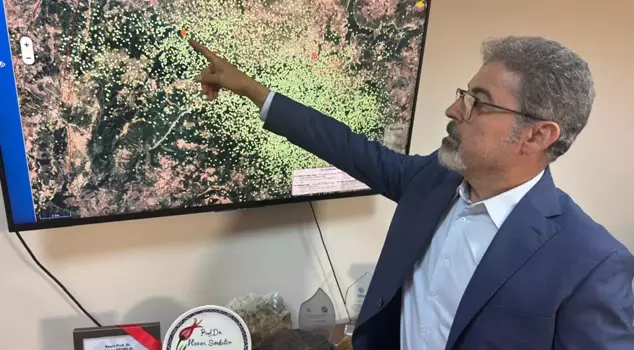
28.10.2025 16:52
Prof. Dr. Hasan Sözbilir stated that more than 200 aftershocks occurred in the region following the 6.1 magnitude earthquake in Balıkesir, and this could continue for several weeks. He pointed out that an earthquake of the same magnitude was experienced on August 10, and mentioned that they have identified six new seismic faults in the region, which have been triggered, naming the main fault zone in the south as the "Emendere Fault Zone."
Professor Dr. Hasan Sözbilir, the Director of the Earthquake Research and Application Center at Dokuz Eylul University (DEU) and a member of the Earthquake Science Committee of the Disaster and Emergency Management Authority, stated that more than 200 aftershocks of varying magnitudes occurred in the region following the 6.1 magnitude earthquake that struck the Sındırgı district of Balıkesir yesterday.
"THE EARTHQUAKE STORM MAY CONTINUE FOR A FEW WEEKS"
Sözbilir explained that the earthquakes in the region are continuing more in the form of an "earthquake storm" and that this situation may persist for a few weeks, emphasizing that the term "earthquake storm" should not be misinterpreted.
"THIS CONCEPT SHOULD NOT BE MISUNDERSTOOD"
Professor Dr. Sözbilir noted that the term "earthquake storm" should not be understood as a damaging mechanism, stating, "On the contrary, an earthquake storm means that earthquakes of magnitudes 3-4 and 5 occur more frequently after a large-scale main shock. An earthquake storm should not be understood in the sense of a damaging mechanism. It can be thought of as a mechanism that develops due to the existence of a geothermal system for the relaxation of the system." he stated.
"THE FIRST EARTHQUAKE TRIGGERED THE SECOND"
Sözbilir pointed out that it is interesting to experience another earthquake of the same magnitude after the earthquake that occurred on August 10 on the Sındırgı fault, stating, "The location of the first earthquake is a bit more northwest, while the location of the second earthquake is a bit more southeast. Therefore, we can evaluate that the first earthquake triggered the second one. We can say that the recurrence of the earthquake at a magnitude of 6.1 is due to the fault." he said.
"6 NEW SEISMIC FAULTS DETECTED"
Sözbilir mentioned that they detected 6 new seismic faults in their scientific study conducted in the mountainous area south of Sındırgı after the earthquake on August 10, stating that these faults have been triggered.
NEW DANGER: EMENDERE FAULT ZONE
Sözbilir indicated that normally the Sındırgı fault and the Simav Fault Zone associated with it are present in the region, stating, "The vast majority of the earthquakes occur in the mountainous area of the Simav Fault Zone. In other words, it remains to the south. A significant portion of the faults we mapped has a length of 10 to 40 kilometers. We named the main fault zone in the south as the 'Emendere Fault Zone.' There are hot springs and a geothermal system there. The existence of this geothermal system indicates the presence of fluidity in the faults there." he said.
"EARTHQUAKES ARE OVERLAPPING"
Professor Dr. Sözbilir emphasized that the aftershocks of the earthquake on August 10 are still continuing in the region, continuing as follows:
"They had not finished yet. The aftershocks of the earthquake that occurred last night are continuing. In fact, the earthquakes are overlapping. At this stage, since there are multiple faults, there is also a possibility of triggering other faults. We can think of aftershocks as a reflection of the released energy. But of course, that energy does not go to waste; it is distributed to different faults within the earth, and those faults will also produce earthquakes when the time comes. There is currently no reason to panic. We have already experienced the main shock. During the aftershocks, earthquakes of up to 5 in magnitude may occur, so people need to stay away from slightly damaged buildings."
Sözbilir added that residents in the area should enter their homes only after the AFAD teams have checked them.